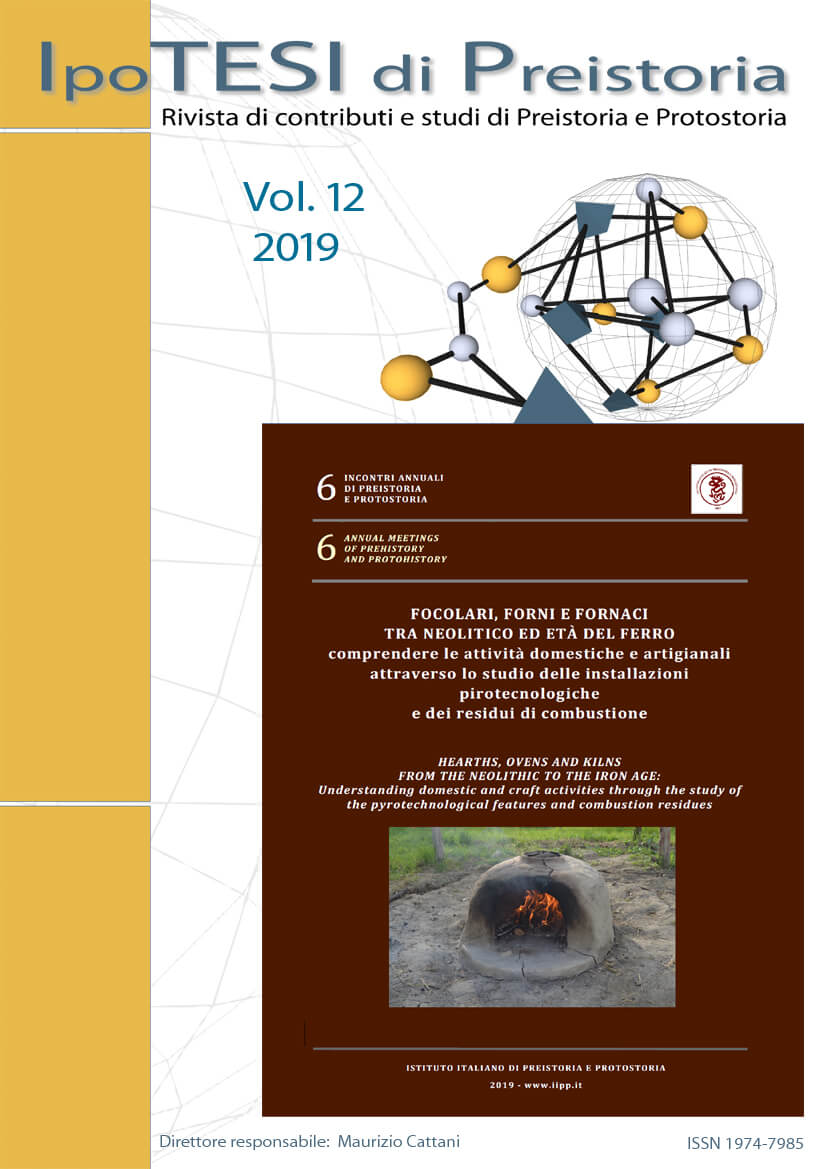The hearths, ovens and firing pits at Lugo di Grezzana (VR)
DOI:
https://doi.org/10.6092/issn.1974-7985/10256Keywords:
Neolithic, first villages, firing structures, hearths, ovens, firing pitsAbstract
Several firing structures, fireplaces, ovens/kilns and firing pits, were found at the Early Neolithic site of Lugo di Grezzana (VR) in Valpantena (Italy), which relates to the Fiorano culture (5300-4900 a.C cal.). Hearths are heat alteration of substrate, which can be prepared or delimited; plastered surfaces hardened by fire are part of fireplaces or ovens/kilns; the latter recognised in vault remains and abundance of daub fragments; firing pits are all characterised by deep rubefaction of the walls, a slightly-fired bottom (or not fired at all) and large carbonized beams just few centimetres above the bottom. There are also all those identifying elements of activities related to the use of fire: ash, charcoal, fired clay, burnt ecofacts and artefacts. The filling over the carbonized beams consists of mixed sediment and chaotic lying artefacts. The morphological peculiarities, the characterisation of the fills and the dimensional differences between the combustion structures suggest different functions. Only the largest and deepest pits can be interpreted as kilns for pottery firing, but other functions are taken in consideration, bearing in mind they may be multi-functional pits.Downloads
Published
2019-12-31
How to Cite
Costa, A., Cavulli, F., & Pedrotti, A. (2019). The hearths, ovens and firing pits at Lugo di Grezzana (VR). IpoTesi Di Preistoria, 12(1), 27–48. https://doi.org/10.6092/issn.1974-7985/10256
Issue
Section
Conference papers
License
Copyright (c) 2019 Annalisa Costa, Fabio Cavulli, Annaluisa Pedrotti
Copyright for articles published in this journal is retained by the authors, with first publication rights granted to the journal. The authors agree when submitting their work that it can be copied by anyone for noncommercial purposes but only if proper credit is given. Thus by virtue of their appearance in this open access journal, the articles have been declared free to use, with proper attribution, in noncommercial settings. All authors are responsible for the content of their work, including proper citation, attribution and usage permissions.
This journal is licensed under a Creative Commons Attribution NonCommercial 4.0 International License.
See also our Open Access Policy.
See also our Open Access Policy.





